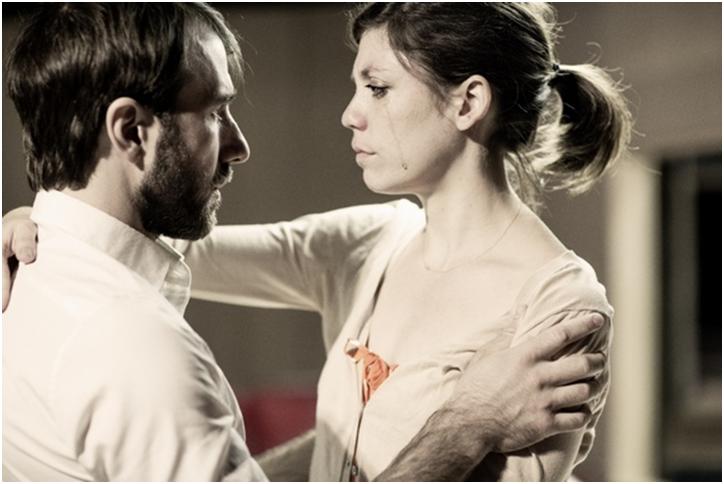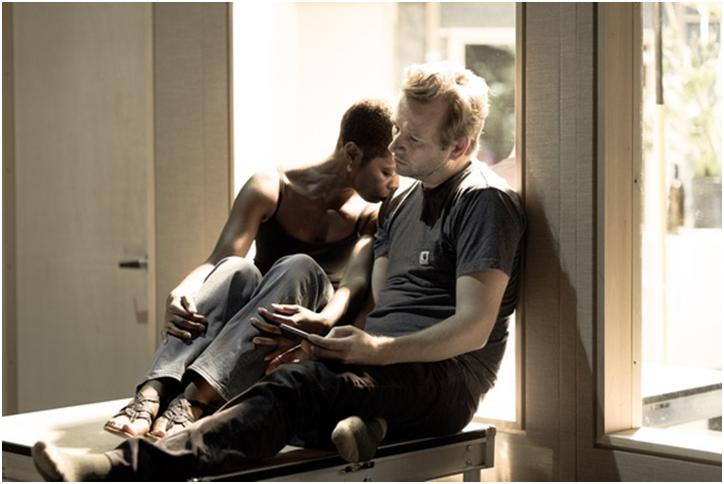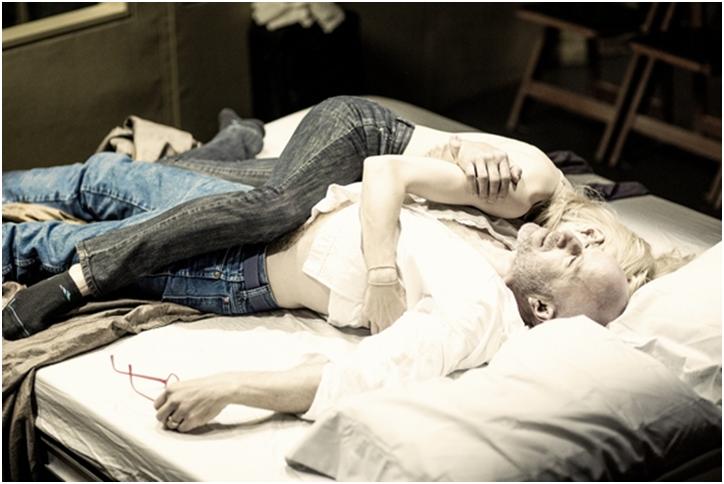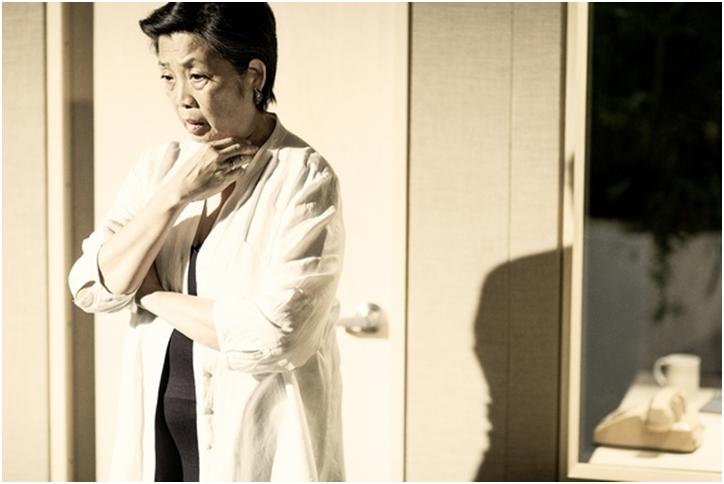Scenes from a Marriage
Maverick theater director's textually faithful reimagining of Ingmar Bergman's classic film can be viewed as a travesty or as profound.

Alex Hurt and Susannah Flood as Johan 1 and Marianne 1 in a dramatic moment from Scenes from a Marriage(Photo credit: Jan Versweyveld)
“But it is almost certainly one of the most important films ever made, if by importance we understand the possibility of art’s influencing people in a positive way—a slight, elusive possibility, perhaps even an impossible one,” from John Simon’s 1975 review of the film version of Scenes from a Marriage released to theaters.
Originally shown as a six-part miniseries on Swedish television in 1973, Ingmar Bergman’s Scenes from a Marriage was a sensation there and throughout Scandinavia. Bergman was persuaded by film company executives to edit it into a nearly three-hour theatrical version that was released to worldwide acclaim.
This searing 10-year examination of a marriage unraveling starred Erland Josephson as the 42-year-old scientist Johan and Liv Ullman as the 35-year-old divorce lawyer Marianne.
Using an English language version of Bergman’s script by Emily Mann, this theatrical reconfiguring was conceived and directed by Ivo van Hove, general director of Holland’s Toneelgroep Amsterdam, renowned for his experimental, avant-garde stage productions. It is a problematic, confounding, and exasperating experience. Its chief innovation is to have the two leading characters played by three sets of diverse actors, purportedly, “…to experience collectively the human dynamics of a relationship through all stages of a life—from youth to middle age to maturity.” In relation to its source material, it comes across as a superficial, ineffective and heavy-handed directorial concept.

Roslyn Ruff and Dallas Roberts as Marianne 2 and Johan 2 as they appear in Scenes from aMarriage (Photo credit: Jan Versweyveld)
Very well performed and always at least interesting, those unfamiliar or barely familiar with the original work could find it stimulating and intriguing. Those very knowledgeable with the film, such as this reviewer who recently watched it again, might find it a trivialization.
Mr. van Hove unquestionably has a command of visual presentation and structure, but he is preoccupied with presenting meta-theatrical devices rather than storytelling and ultimately creating a cold, detached tone. Emotionalismrecurs but is always replaced by emotional distance. When some water is spilled close to the audience, an actor breaks character and hands out towels. Songs of Bob Dylan, Leonard Cohen, Simon and Garfunkel, (and even that 1960’s mystical chestnut, “The Windmills of Your Mind,”) are played throughout for stridently ironic effect.
Audience members on arrival receive a wristband and according to the color of it, enter one of three entrances provided for this production at the 199-seat New York Theatre Workshop. There in a small room, they watch a scene performed by one of the sets of actors. Through the stage windows and the sounds ofvoices, they’re aware of other two scenes being performed simultaneously.After about 30 minutes,they are directed to another room and the process is repeated again and once more with the other two pairs of actor. This means that two thirds of the audience sees the sequences in non-chronological order.
Following a 30-minute intermission, the audience returns and the three rooms have been disassembled and replaced by a large round arena-like playing area where they watch the action collectively. All three couples now appear together at times throughout the second part, addressing their different counterparts. There’s crosstalk, overlapping dialogue, exaggerated fondling and groping, a thrilling clash with superb fight choreography, and offstage sex sounds by departed characters. Much of the effect of all this is farcical and shrill. One scene between Marianne and her mother stands out. The two actors simply converse with conviction and it conveys the sense that an adaptation could be performed successfully in a conventional manner.

Tina Benko and Arliss Howard as Marianne 3 and Johan 3 in Scenes from aMarriage (Photo credit Jan Versweyveld)
The three couples are played with fierce conviction, total commitment and great talent by a corps of strong actors seemingly also cast for their individuality. Alex Hurt and Susannah Flood are the young couple. Dallas Roberts and Roslyn Ruff are the middle-aged couple. Arliss Howard and Tina Benko are the older couple. They appear to have been cast for their differences rather than any similarities.
In the small dual roles of an older woman seeking a divorce and as Marianne’s mother, Mia Katigbak shines. This excellent performer seizes the opportunity to give sustained characterizations with engaging warmth and eccentricity.
Emma Ramos makes the most of her brief role of Eva, Johan’s work colleague who pops in from time to time. She is always charmingly direct and compelling.
As a bickering married couple seen only at a dinner party, Carmen Zilles(Katrina) and Erin Gann (Peter) are forcefully earnest, making fine impressions.

Mia Katigbak as Mrs. Jacobi in a reflective moment from Scenes from a Marriage (Photo credit: Jan Versweyveld)
The production design by Jan Versweyveld creates a dazzlingly immersive environment that totally involves the audience in the universe of this conception.
If van Hove had created an original piece dealing with relationships and the passage of time, it would certainly be judged differently as opposed to idiosyncratically adapting a major film.
“…Bergman has captured in Scenes from a Marriage, a super spectacular like War and Peace, complete with Battle of Borodino and all the rest, for a cast of millions played by two players. And, for the most part, only by their faces, voices, words—and their great creator, Ingmar Bergman,” from John Simon’s review.
Overall, this intense three and half-hour event is challenging and at times rewarding, but it would be best enjoyed by connoisseurs of theatrical experimentation.
Scenes from a Marriage (through October 26th, 2014)
New York Theatre Workshop, 79 East 4th Street, in Manhattan
For tickets, call 212-460-5475 or visit http://www.nytw.org
Running time: three and a half hours including one 30-minute intermission






Leave a comment